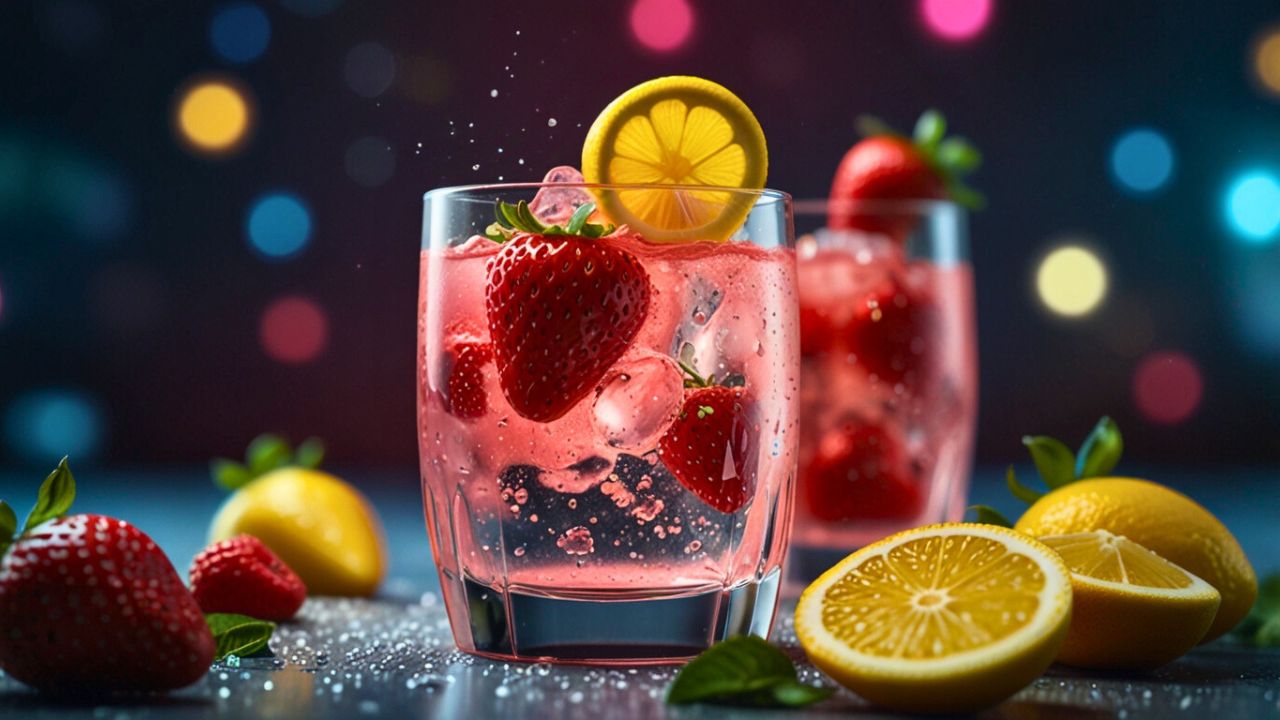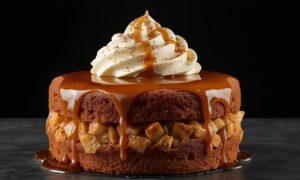Is there anything more refreshing than a tall, frosty glass of Strawberry Lemonade on a hot summer day? Picture this: juicy, sun ripened strawberries blended into a vibrant puree, mixed with freshly squeezed lemon juice, and sweetened just right. This Strawberry Lemonade isn’t just a drink it’s a burst of sunshine in every sip, balancing sweet and tart flavors perfectly.
Forget store bought versions loaded with artificial flavors. This homemade Strawberry Lemonade is all about real ingredients and bold, natural taste. You’ll learn how to pick the sweetest strawberries, extract their full flavor, and combine them with zesty lemons for a drink that’s irresistibly refreshing. Plus, I’ll share pro tips to customize your Strawberry Lemonade whether you prefer it sparkling, spiked, or turned into frozen treats.
Strawberry Lemonade isn’t just a thirst quencher; it’s a celebration of summer in a glass. Perfect for backyard BBQs, poolside lounging, or just brightening an ordinary afternoon, this recipe will become your warm weather staple. Get ready to blend, sip, and savor the taste of the season!
The Science Behind Perfection
Strawberry lemonade’s magic lies in the dance between anthocyanins and citric acid. These compounds don’t just create flavor they orchestrate color, aroma, and mouthfeel. The timing of when you introduce each element determines whether you’ll achieve that coveted jewel tone clarity.
Professional kitchens understand that extraction is everything. You’re not just crushing strawberries. You’re carefully releasing pectin, natural sugars, and volatile aromatics in a controlled sequence that maximizes flavor while maintaining structural integrity.
Ingredients & Substitutions
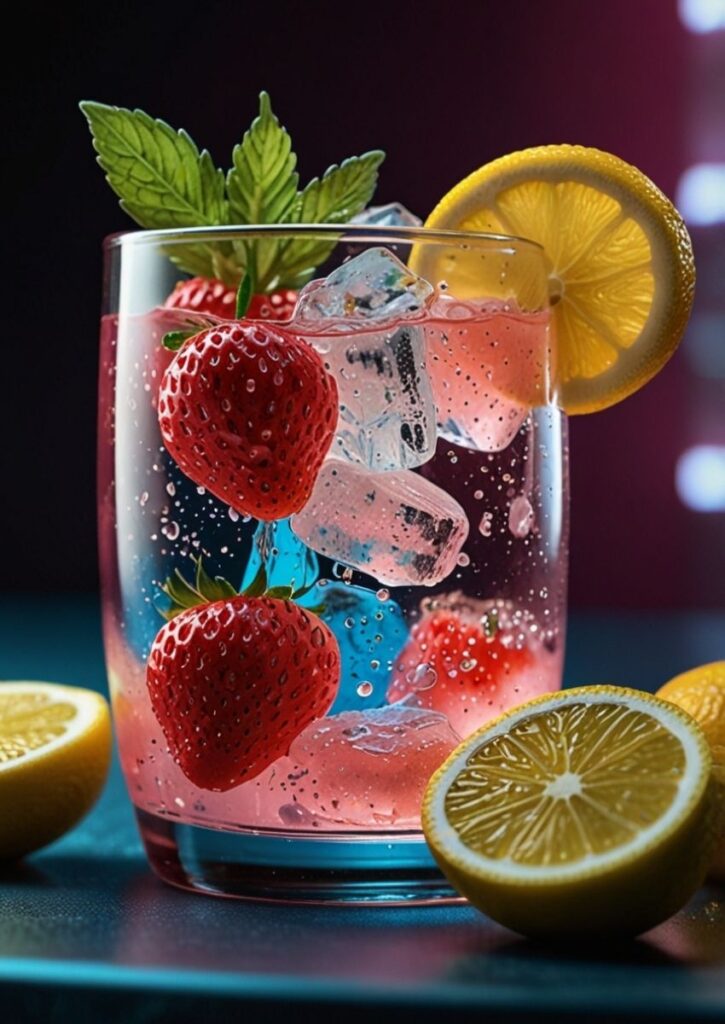
Fresh Strawberries – 2 pounds, peak ripeness Hunt for berries that give slightly under gentle pressure but still hold their shape. The best ones smell like strawberry candy before you even hull them. That’s when you know the sugars have concentrated properly. Avoid berries with white shoulders or hollow centers they lack the flavor density this recipe demands.
Can’t find perfect fresh berries? High quality frozen strawberries actually work better than mediocre fresh ones. They’re frozen at peak ripeness. Just thaw completely and use every drop of accumulated juice. That’s liquid gold right there.
Fresh Lemons – 8 to 10 large, room temperature Meyer lemons bring floral complexity that Eureka lemons can’t match. Either works beautifully though. The key is temperature cold lemons are stingy with their juice. Room temperature ones surrender everything willingly. Roll them firmly on your counter before cutting to break down internal membranes.
Never use bottled lemon juice for this recipe. Those bright, volatile compounds that make fresh lemon juice sparkle disappear the moment you open a bottle. You’re left with flat, one dimensional acidity that kills the magic.
Superfine Sugar – 1 cup (adjust to taste) Regular granulated sugar works fine. Superfine dissolves faster and more completely in cold applications. You can make your own by pulsing regular sugar in a food processor for 30 seconds. The finer crystals integrate seamlessly without that gritty texture.
Raw sugar adds molasses notes that some love. Coconut sugar brings subtle caramel undertones. Simple syrup eliminates dissolution issues entirely, but you lose some textural complexity in the process.
Filtered Water – 6 cups, ice cold Water quality matters more than most realize in beverage applications. Chlorinated tap water can clash with delicate fruit flavors. Mineral heavy water can create unexpected interactions with the acids. When in doubt, go filtered it’s insurance against off flavors.
Ice – plenty of large cubes Small ice melts fast and dilutes aggressively. Large cubes maintain temperature while preserving flavor concentration. If you’re feeling fancy, freeze some of the finished lemonade in ice cube trays. This prevents dilution entirely.
Step by Step Instructions
Step 1: Macerate the Strawberries Hull and quarter your strawberries. Toss them with 3 tablespoons of sugar in a large bowl. Let them sit for exactly 45 minutes. Stir every 15 minutes to ensure even extraction.
This isn’t just about sweetening. You’re triggering osmosis to draw out cellular moisture while breaking down pectin walls. The strawberries should look glossy and be swimming in bright red juices. If they’re not, your berries weren’t ripe enough.
Step 2: Create the Perfect Puree Transfer those gorgeous macerated berries to a food processor. Pulse in short bursts until you achieve your desired texture. I prefer a slightly chunky consistency that leaves tiny pieces for visual interest.
Here’s where most people go wrong: they overprocess into baby food consistency. You lose all the delightful bits that make each sip interesting. Stop just before it becomes completely smooth. Strain half through a fine mesh sieve if you want some clarity alongside the texture.
Step 3: Extract Maximum Lemon Juice Cut your room temperature lemons in half. Juice them through a fine strainer to catch seeds while preserving precious pulp. You need exactly 1 cup of fresh juice no more, no less. This recipe’s balance depends on precise ratios.
Taste your lemon juice as you go. Some lemons are more acidic than others. Seasonal variations can throw off your entire flavor profile if you’re not paying attention.
Step 4: Build Your Base In a large pitcher, combine the strawberry puree with the fresh lemon juice. Add your sugar gradually, whisking constantly to prevent clumping. This is where your palate becomes your best tool taste continuously and adjust as needed.
The mixture should taste almost aggressively flavorful at this point. Remember, you’re adding water and ice that will dilute everything significantly. What seems perfect now will taste weak later.
Step 5: Dilute and Balance Add your ice cold water slowly. Taste after each addition. Start with 4 cups and work your way up you can always add more water, but you can’t take it back. The final flavor should be bright, fruity, and perfectly balanced between sweet and tart.
This is the make or break moment. Too much water and you’ve created expensive flavored water. Too little and you’ll overwhelm your guests with intensity that belongs in a concentrate.
Step 6: Rest and Refine Chill your finished strawberry lemonade for at least 2 hours before serving. This resting period allows all the flavors to marry and develop complexity. The complexity isn’t present immediately after mixing.
Give it one final taste and adjust if needed. Sometimes the overnight rest reveals that you need just a touch more lemon juice. Or a whisper of additional sweetness to achieve perfection.
Cooking Techniques & Science
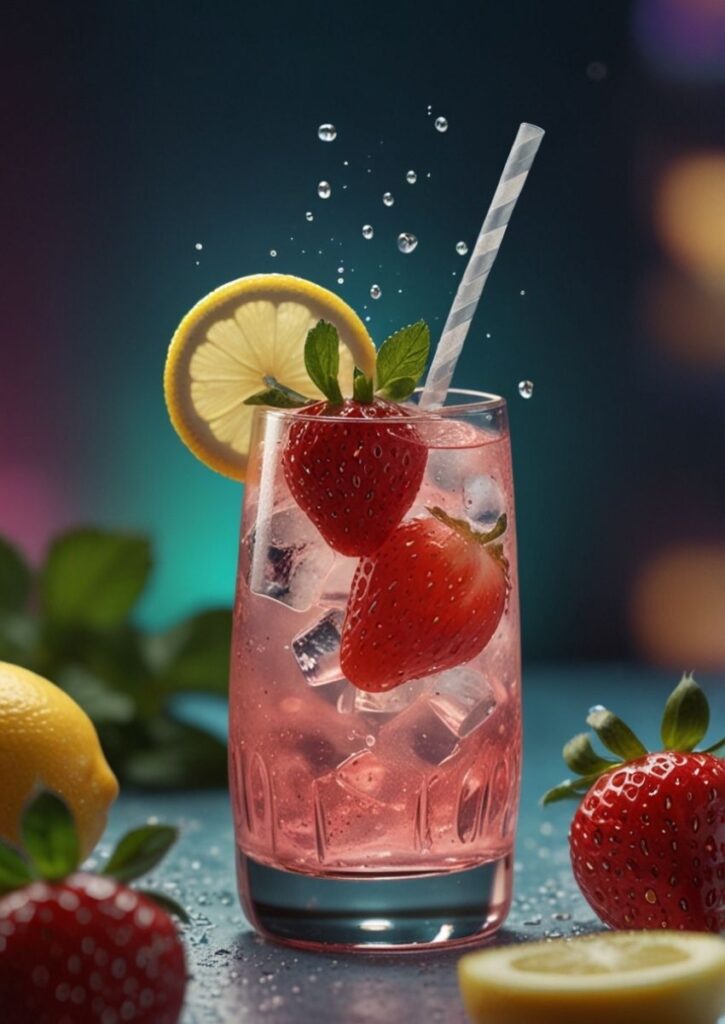
The magic in professional strawberry lemonade happens at the molecular level. Strawberries contain both citric and malic acids. These complement lemon’s citric acid while adding layers of complexity that single acid beverages can’t achieve. Understanding this interplay lets you manipulate flavor profiles in sophisticated ways.
Temperature control throughout the process preserves volatile aromatics. These give the drink its “fresh strawberry” smell. Heat destroys these delicate compounds. This is why rushed maceration or hot simple syrups create flat tasting results.
The pectin released during maceration serves as a natural thickening agent. It gives properly made strawberry lemonade a luxurious mouthfeel that artificial versions can’t replicate. This is why the maceration step is non negotiable skip it and you’re making flavored water.
Professional establishments often employ clarification techniques borrowed from molecular gastronomy. Agar clarification creates crystal clear strawberry lemonade with intense fruit flavor. Enzyme treatments can enhance juice extraction from the fruit. These advanced techniques aren’t necessary for excellent results, but they demonstrate how seriously high end kitchens approach this beverage.
Serving & Pairing Suggestions
Presentation transforms strawberry lemonade from refreshment to experience. Serve in clear glassware to showcase that gorgeous ruby color. Consider garnishing with fresh strawberry fans and candied lemon wheels for visual drama.
Professional tip: rim your glasses with strawberry sugar. Make it by processing freeze dried strawberries with superfine sugar. It adds an unexpected flavor burst with the first sip while creating Instagram worthy visual appeal.
The beverage pairs beautifully with summer’s best offerings. Grilled fish with herb butter, fresh goat cheese salads, or stone fruit desserts all work perfectly. Its bright acidity cuts through rich foods while complementing other seasonal ingredients.
Consider offering variations to maximize appeal. Sparkling versions with quality club soda work great. Adult versions with premium vodka or gin are popular. Frozen versions for scorching summer days sell well too. Each variation uses the same base recipe while appealing to different customer preferences.
For large scale service, prepare components separately and combine just before serving. Strawberry puree holds for three days refrigerated. Simple syrup keeps for weeks. Fresh lemon juice should be extracted daily for optimal flavor, but the base can be batched and customized per order.
Professional Variations Worth Mastering
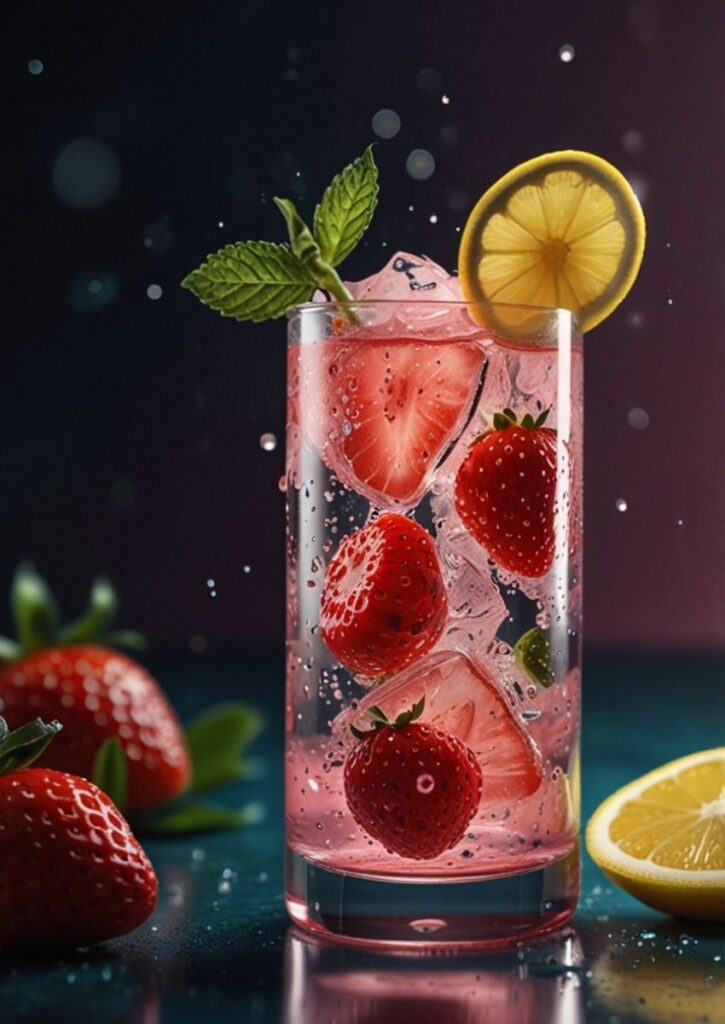
Modern beverage programs push strawberry lemonade in exciting directions. Fermented versions using natural strawberry sugars create complex, lightly effervescent drinks with probiotic benefits. The fermentation process takes 3-5 days but produces sophisticated flavors that command premium pricing.
Molecular techniques like spherification can create “caviar” bursts of concentrated strawberry flavor. These explode on the tongue. These techniques require specialized ingredients and equipment, but they create memorable experiences that justify higher price points.
Seasonal adaptations keep the drink relevant year round. Winter versions might incorporate warming spices like fresh ginger or cardamom. Spring versions could feature early strawberry varieties with different flavor profiles. Fall adaptations might include apple cider elements for transitional season appeal.
Regional variations reflect local tastes and ingredient availability. Southern versions often incorporate sweet tea elements, creating complex beverages that bridge multiple traditions. California versions emphasize organic, locally sourced ingredients that change with the seasons. Northeast versions might feature maple syrup as a sweetener during spring sugaring season.
Final Thoughts on Strawberry Lemonade
Strawberry lemonade represents everything beautiful about seasonal beverage craft and professional attention to detail. When executed with proper technique and quality ingredients, it transcends its humble origins. It becomes something genuinely special a drink that makes people pause and smile.
The key lies in understanding that simplicity doesn’t mean easy. It means flawless execution of fundamental techniques. Master the maceration process. Source the finest ingredients available. Never underestimate the importance of proper balance and timing. Your customers will taste the difference in every sip.
What sets professional strawberry lemonade apart isn’t just technique it’s understanding that every glass tells a story. The story of peak season strawberries, hand selected for perfect ripeness. The story of lemons juiced at exactly the right temperature for maximum extraction. The story of patience during maceration and precision in balancing.
Whether you’re running a high end restaurant, a casual cafe, or just want to impress guests at your next gathering, this approach to strawberry lemonade will set you apart. Remember: anyone can mix fruit with sugar and citrus. Only professionals create experiences that keep customers coming back, glass after perfect glass.
Frequently Asked Questions about Strawberry Lemonade
How long does homemade strawberry lemonade stay fresh?
Fresh strawberry lemonade maintains peak quality for 3-4 days when properly refrigerated in airtight containers. The fruit components begin losing vibrancy after this point. It remains safe to drink for up to a week though. Always stir before serving since natural separation occurs with fruit based beverages.
Can I make strawberry lemonade without a food processor?
Absolutely many traditional recipes rely on hand mashing techniques that create rustic, authentic results. Use a potato masher or wooden spoon during the maceration process to break down the strawberries. The texture will be more chunky, but the flavor remains excellent. Some prefer this old school approach.
Why does my strawberry lemonade turn brown after sitting?
Color degradation happens when strawberry pigments react to light and pH changes over time. Combat this by adding an extra tablespoon of lemon juice to increase acidity. Store in dark containers and keep everything properly refrigerated. Using the freshest possible strawberries also helps maintain color stability.
What’s the ideal strawberry to lemon ratio for perfect balance?
The sweet spot is roughly 2 pounds of strawberries to 8-10 large lemons. This varies significantly with fruit quality and personal preferences though. Always taste as you build the recipe. Some strawberry varieties are naturally sweeter and need more lemon juice for balance. Tart varieties require less citrus intervention.
How do I scale this recipe for large events without losing quality?
Prepare components separately for optimal results. Make strawberry puree and simple syrup up to 2 days ahead. Extract lemon juice the day before service, then combine everything just before serving. This approach maintains peak flavor while allowing efficient large batch preparation and consistent results.

Swiftly Captions by Tina Smith — Quick, flavorful food recipes made simple, bringing fresh inspiration to your kitchen every day
